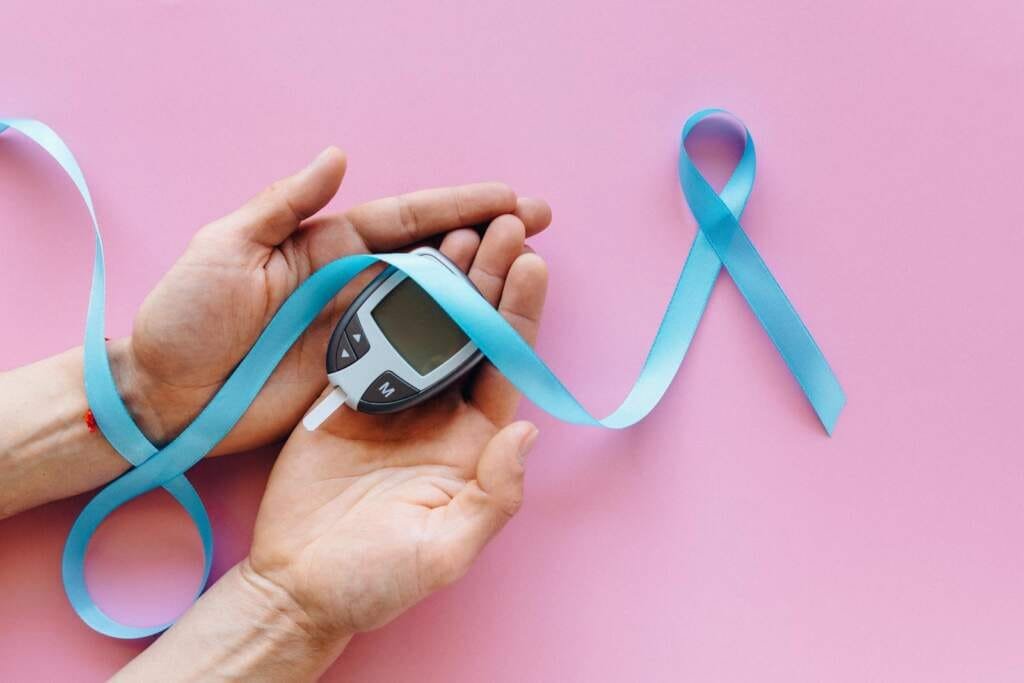Table of Contents
Type 2 Diabetes is a chronic condition that affects the way your body metabolizes sugar (glucose), your body’s main source of fuel. It’s characterized by the body’s inability to effectively use insulin, or by the pancreas not producing enough insulin. This leads to an excess of sugar circulating in the bloodstream, which over time can lead to serious health problems impacting various major organ systems. Understanding the intricacies of Type 2 Diabetes is crucial for promoting early detection, effective management, and ultimately, a healthier life.
In recent years, Type 2 Diabetes has reached near epidemic proportions globally, largely driven by lifestyle factors. This isn’t to say that it’s solely a consequence of personal choices, as genetics and other factors also play a significant role. However, the increasing prevalence underscores the urgent need for widespread awareness and proactive measures. This article aims to provide a comprehensive overview of Type 2 Diabetes, exploring its causes, symptoms, diagnosis, treatment, and preventative strategies.
Understanding Type 2 Diabetes: A Comprehensive Breakdown
To truly grasp Type 2 Diabetes, it’s essential to understand how glucose metabolism works in a healthy body and how it becomes dysregulated in this condition.

How Glucose Metabolism Works in a Healthy Body
When you consume food, your digestive system breaks down carbohydrates into glucose, which then enters your bloodstream. This process causes a natural rise in blood sugar levels. In response, the pancreas, a gland located behind the stomach, releases insulin—a hormone that acts as a key, allowing glucose to enter the body’s cells. Once inside the cells, glucose is converted into energy, fueling various bodily functions.
What Happens in Type 2 Diabetes?
In Type 2 Diabetes, this finely tuned process is disrupted due to two major issues: insulin resistance and impaired insulin secretion.
- Insulin Resistance:
- Normally, insulin helps glucose enter cells in muscles, fat, and the liver. However, in individuals with Type 2 Diabetes, these cells become resistant to insulin’s effects.
- This means that even though insulin is present, the cells do not respond properly, making it difficult for glucose to enter.
- Think of it as a malfunctioning lock (the cells) that no longer responds well to the key (insulin). As a result, the pancreas produces even more insulin to compensate for this resistance.
- Impaired Insulin Secretion:
- Over time, the pancreas struggles to keep up with the increasing demand for insulin.
- The beta cells, responsible for insulin production, may become overworked and start to lose function, leading to an insufficient insulin supply.
- Without enough insulin to regulate blood sugar, glucose begins to build up in the bloodstream.
The Consequences of Chronic High Blood Sugar
The combination of insulin resistance and impaired insulin secretion results in hyperglycemia—persistently high blood sugar levels. This is the defining feature of Type 2 Diabetes and the root cause of many of its complications.
Long-term exposure to high blood sugar can damage various organs and systems in the body, leading to serious complications such as:
- Cardiovascular disease (increased risk of heart attacks and strokes)
- Nerve damage (leading to numbness, tingling, and pain, especially in the hands and feet)
- Kidney disease (potentially leading to kidney failure)
- Eye complications (such as diabetic retinopathy, which can cause vision loss)
Understanding these mechanisms highlights the importance of managing Type 2 Diabetes through lifestyle modifications, medication, and regular monitoring to prevent complications and maintain overall health.
Unraveling the Causes and Risk Factors of Type 2 Diabetes
While the exact cause of Type 2 Diabetes isn’t fully understood, a complex interplay of genetic and environmental factors contributes to its development. Identifying risk factors can help individuals understand their susceptibility and take proactive steps.
Here are some prominent risk factors for Type 2 Diabetes:
- Weight and Obesity: Excess weight, especially abdominal fat, is a major risk factor. Fat tissue can contribute to insulin resistance. The more fatty tissue you have, the more resistant your cells become to insulin.
- Inactivity: Physical inactivity significantly increases the risk. Exercise makes your cells more sensitive to insulin and helps control weight.
- Family History: Having a parent, sibling, or close relative with Type 2 Diabetes significantly increases your risk, highlighting a strong genetic component.
- Age: The risk of Type 2 Diabetes increases as you get older, particularly after age 45. This is likely due to a combination of factors including decreased muscle mass, weight gain, and reduced insulin sensitivity with age.
- Ethnicity: Certain ethnic groups are at higher risk, including African Americans, Hispanic Americans, American Indians, and Asian Americans.
- Prediabetes: Prediabetes occurs when your blood sugar levels are higher than normal but not yet high enough to be classified as Type 2 Diabetes. It’s a major risk factor for developing Type 2 Diabetes.
- Gestational Diabetes: Developing gestational diabetes during pregnancy increases your risk of developing Type 2 Diabetes later in life.
- Polycystic Ovary Syndrome (PCOS): Women with PCOS, a common hormonal disorder, are at increased risk of Type 2 Diabetes.
- High Blood Pressure and Cholesterol Levels: These conditions are often associated with insulin resistance and increase the risk of Type 2 Diabetes.
Recognizing the Symptoms of Type 2 Diabetes

Symptoms of Type 2 Diabetes can often develop slowly and subtly, sometimes making it challenging to recognize them in the early stages. Some people may even live for years without knowing they have the condition. However, being aware of the common symptoms is crucial for timely diagnosis and management.
Here are some common symptoms of Type 2 Diabetes:
- Increased Thirst (Polydipsia): As excess sugar builds up in your bloodstream, your body tries to flush it out through urine, leading to dehydration and increased thirst.
- Frequent Urination (Polyuria): The kidneys work overtime to filter and absorb excess sugar, leading to increased urine production, especially at night.
- Increased Hunger (Polyphagia): Even though blood sugar levels are high, glucose isn’t entering cells effectively to provide energy, leading to persistent hunger.
- Unexplained Weight Loss: Paradoxically, despite increased hunger, some people with Type 2 Diabetes may experience unexplained weight loss because the body may start breaking down muscle and fat for energy when glucose isn’t readily available to cells.
- Fatigue: Lack of energy due to glucose not being properly utilized by cells can lead to persistent fatigue and tiredness.
- Blurred Vision: High blood sugar can affect the lens of the eye, leading to temporary blurred vision.
- Slow-Healing Sores or Frequent Infections: High blood sugar can impair the body’s ability to heal wounds and fight off infections.
- Areas of Darkened Skin (Acanthosis Nigricans): Dark, velvety patches of skin, often in the armpits and neck, can be a sign of insulin resistance.
It’s important to note that not everyone with Type 2 Diabetes experiences all of these symptoms, and some individuals may have very mild or no noticeable symptoms in the early stages. If you experience any of these symptoms, it’s crucial to consult a healthcare professional for proper evaluation and diagnosis.
Diagnosing Type 2 Diabetes: Unveiling the Condition
Diagnosing Type 2 Diabetes typically involves blood glucose tests. These tests measure the level of glucose in your blood at different times or after specific procedures.
The primary diagnostic tests include:
- Glycated Hemoglobin (A1C) Test: This blood test indicates your average blood sugar level for the past two to three months. It measures the percentage of blood sugar attached to hemoglobin, the oxygen-carrying protein in red blood cells. An A1C level of 6.5% or higher on two separate tests indicates diabetes.
- Fasting Plasma Glucose (FPG) Test: This test measures your blood sugar level after an overnight fast (at least 8 hours). A fasting blood sugar level of 126 mg/dL (7.0 mmol/L) or higher on two separate tests indicates diabetes.
- Oral Glucose Tolerance Test (OGTT): This test involves fasting overnight, and then drinking a sugary liquid. Blood sugar levels are checked periodically for two hours after drinking the liquid. A 2-hour blood sugar level of 200 mg/dL (11.1 mmol/L) or higher indicates diabetes.
- Random Plasma Glucose (RPG) Test: This test measures your blood sugar at any time of day, regardless of when you last ate. A random blood sugar level of 200 mg/dL (11.1 mmol/L) or higher, in addition to symptoms of diabetes, can indicate diabetes.
Table: Diagnostic Criteria for Diabetes and Prediabetes
| Test | Normal | Prediabetes | Diabetes |
|---|---|---|---|
| A1C | Below 5.7% | 5.7% to 6.4% | 6.5% or higher |
| Fasting Blood Sugar | Less than 100 mg/dL (5.6 mmol/L) | 100 to 125 mg/dL (5.6 to 6.9 mmol/L) | 126 mg/dL (7.0 mmol/L) or higher |
| 2-Hour OGTT Blood Sugar | Less than 140 mg/dL (7.8 mmol/L) | 140 to 199 mg/dL (7.8 to 11.0 mmol/L) | 200 mg/dL (11.1 mmol/L) or higher |
Prediabetes is diagnosed when blood sugar levels are higher than normal but do not meet the criteria for diabetes. Early detection of prediabetes is crucial because lifestyle changes can often prevent or delay the progression to Type 2 Diabetes.
Read More: Type 2 Diabetes Symptoms: 10 Warning Signs to Know
Treatment and Management Strategies for Type 2 Diabetes

Managing Type 2 Diabetes is a lifelong journey that requires a multifaceted approach. The primary goals of treatment are to maintain healthy blood sugar levels, prevent complications, and improve overall quality of life.
Treatment typically involves a combination of:
- Lifestyle Modifications: These are the cornerstone of Type 2 Diabetes management.
- Dietary Changes: Eating a balanced diet rich in fruits, vegetables, whole grains, and lean protein is essential. Focus on portion control, reducing intake of sugary drinks and processed foods, and choosing healthy fats. Working with a registered dietitian can be highly beneficial to create a personalized meal plan.
- Regular Physical Activity: Aim for at least 150 minutes of moderate-intensity aerobic activity per week, such as brisk walking, jogging, or swimming. Incorporate strength training exercises at least twice a week. Exercise improves insulin sensitivity and helps manage weight and blood sugar levels.
- Weight Management: Losing even a small amount of weight (5-10% of body weight) can significantly improve insulin sensitivity and blood sugar control.
- Medications: When lifestyle modifications alone are not sufficient to achieve target blood sugar levels, medications are often necessary.
- Oral Medications: Several classes of oral medications are available to help lower blood sugar. These medications work in different ways, such as increasing insulin sensitivity, stimulating insulin secretion, or reducing glucose production by the liver. Common classes include metformin, sulfonylureas, DPP-4 inhibitors, SGLT2 inhibitors, and thiazolidinediones.
- Insulin Therapy: In some cases, particularly as Type 2 Diabetes progresses, insulin therapy may be required. Insulin is administered via injection or an insulin pump. Different types of insulin are available, with varying onset and duration of action.
- Regular Monitoring: Self-monitoring of blood glucose using a blood glucose meter is crucial for effective management. Regular check-ups with your healthcare team, including your doctor, diabetes educator, and registered dietitian, are also essential.
Prevention Strategies for Type 2 Diabetes
While some risk factors like genetics and age are not modifiable, many lifestyle factors that contribute to Type 2 Diabetes are within your control. Making proactive lifestyle changes can significantly reduce your risk or delay the onset of the condition.
Here are key preventive strategies:
- Maintain a Healthy Weight: Achieving and maintaining a healthy weight through balanced diet and regular exercise is paramount.
- Eat a Healthy Diet: Adopt a diet rich in fruits, vegetables, whole grains, and lean protein. Limit sugary drinks, processed foods, and unhealthy fats.
- Engage in Regular Physical Activity: Make regular exercise a part of your routine. Aim for at least 150 minutes of moderate-intensity aerobic exercise per week.
- Get Regular Check-ups and Screening: If you have risk factors for Type 2 Diabetes, talk to your doctor about regular screening, especially if you are over 45 or have a family history of diabetes.
- Manage Stress: Chronic stress can impact blood sugar levels. Practice stress-reducing techniques like yoga, meditation, or spending time in nature.
Potential Complications of Untreated Type 2 Diabetes
If Type 2 Diabetes is left untreated or poorly managed, chronically high blood sugar levels can damage various organs and systems over time, leading to serious complications:
- Cardiovascular Disease: Increased risk of heart disease, stroke, high blood pressure, and high cholesterol.
- Neuropathy (Nerve Damage): Nerve damage can cause numbness, tingling, pain, and loss of sensation in the extremities, particularly the feet and hands.
- Nephropathy (Kidney Damage): Diabetes can damage the kidneys, leading to chronic kidney disease and potentially kidney failure.
- Retinopathy (Eye Damage): Diabetes can damage the blood vessels in the retina, leading to vision problems and even blindness.
- Foot Problems: Nerve damage and poor circulation in the feet can increase the risk of foot ulcers, infections, and even amputation.
- Skin Conditions: Increased susceptibility to skin infections and fungal infections.
- Hearing Impairment: Diabetes has been linked to hearing loss.
- Alzheimer’s Disease: Research suggests a possible link between Type 2 Diabetes and an increased risk of Alzheimer’s disease.
“Diabetes is a silent killer, but with the right lifestyle changes, it can be managed and even prevented.” — Dr. Richard K. Bernstein (Physician and Diabetes Expert)

Frequently Asked Questions (FAQs) about Type 2 Diabetes
Q: What is the difference between Type 1 and Type 2 Diabetes?
A: Type 1 Diabetes is an autoimmune condition where the body’s immune system attacks and destroys insulin-producing cells in the pancreas. In Type 2 Diabetes, the body becomes resistant to insulin, and the pancreas may not produce enough insulin. Type 1 diabetes typically develops in childhood or adolescence and requires lifelong insulin therapy, while Type 2 Diabetes often develops in adulthood and may initially be managed with lifestyle changes and oral medications.
Q: Can Type 2 Diabetes be reversed?
A: In some cases, particularly with early diagnosis and significant lifestyle changes (weight loss, diet, exercise), Type 2 Diabetes can go into remission. Remission means blood sugar levels return to normal without medication. However, it’s important to note that diabetes is often considered a chronic condition, and long-term management is crucial.
Q: What are the best foods to eat for Type 2 Diabetes?
A: The best diet for Type 2 Diabetes focuses on whole, unprocessed foods. This includes plenty of non-starchy vegetables, fruits in moderation, whole grains, lean proteins, and healthy fats. Limit sugary drinks, processed foods, and refined carbohydrates. Consult with a registered dietitian for personalized dietary advice.
Q: How often should I check my blood sugar if I have Type 2 Diabetes?
A: The frequency of blood sugar monitoring depends on your individual treatment plan and medications. Your healthcare team will guide you on how often and when to check your blood sugar. Some people may need to check multiple times a day, while others may check less frequently.
Q: Is exercise safe for people with Type 2 Diabetes?
A: Yes, exercise is highly recommended and safe for most people with Type 2 Diabetes. Exercise improves insulin sensitivity, helps manage weight and blood sugar levels, and offers numerous other health benefits. However, it’s important to discuss your exercise plan with your doctor, especially if you have any complications or are taking insulin or certain medications.
Conclusion: Empowering Yourself with Knowledge
Type 2 Diabetes is a complex and increasingly prevalent condition. However, with knowledge, proactive lifestyle choices, and effective medical management, individuals with Type 2 Diabetes can live long and healthy lives. Understanding the causes, symptoms, and treatment options empowers you to take control of your health. Early detection, consistent self-management, and close collaboration with your healthcare team are key to preventing complications and thriving with Type 2 Diabetes. Remember, you are not alone, and resources and support are available to help you navigate this journey successfully.











3 Comments